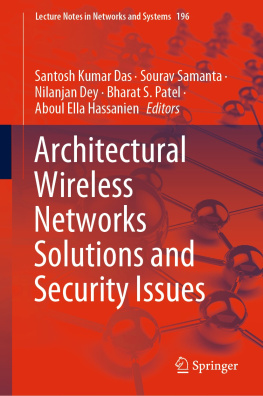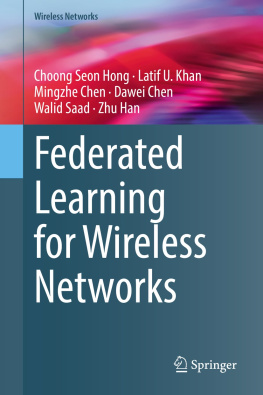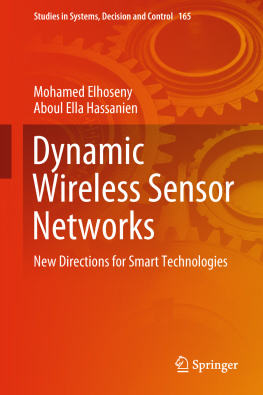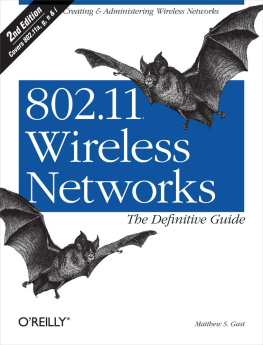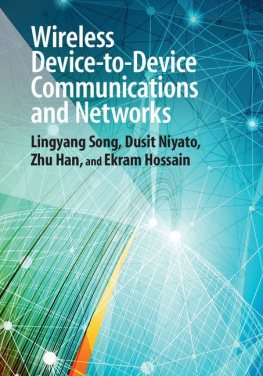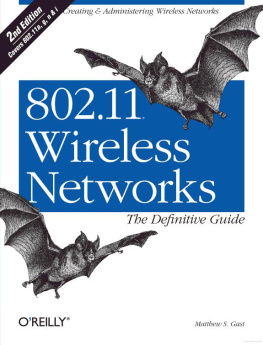Volume 196
Lecture Notes in Networks and SystemsSeries EditorJanusz KacprzykSystems Research Institute, Polish Academy of Sciences, Warsaw, Poland
Advisory EditorsFernando GomideDepartment of Computer Engineering and AutomationDCA, School of Electrical and Computer EngineeringFEEC, University of CampinasUNICAMP, So Paulo, Brazil
Okyay KaynakDepartment of Electrical and Electronic Engineering, Bogazici University, Istanbul, Turkey
Derong LiuDepartment of Electrical and Computer Engineering, University of Illinois at Chicago, Chicago, USA, Institute of Automation, Chinese Academy of Sciences, Beijing, China
Witold PedryczDepartment of Electrical and Computer Engineering, University of Alberta, Alberta, Canada, Systems Research Institute, Polish Academy of Sciences, Warsaw, Poland
Marios M. PolycarpouDepartment of Electrical and Computer Engineering, KIOS Research Center for Intelligent Systems and Networks, University of Cyprus, Nicosia, Cyprus
Imre J. Rudasbuda University, Budapest, Hungary
Jun WangDepartment of Computer Science, City University of Hong Kong, Kowloon, Hong Kong
The series Lecture Notes in Networks and Systems publishes the latest developments in Networks and Systemsquickly, informally and with high quality. Original research reported in proceedings and post-proceedings represents the core of LNNS.
Volumes published in LNNS embrace all aspects and subfields of, as well as new challenges in, Networks and Systems.
The series contains proceedings and edited volumes in systems and networks, spanning the areas of Cyber-Physical Systems, Autonomous Systems, Sensor Networks, Control Systems, Energy Systems, Automotive Systems, Biological Systems, Vehicular Networking and Connected Vehicles, Aerospace Systems, Automation, Manufacturing, Smart Grids, Nonlinear Systems, Power Systems, Robotics, Social Systems, Economic Systems and other. Of particular value to both the contributors and the readership are the short publication timeframe and the world-wide distribution and exposure which enable both a wide and rapid dissemination of research output.
The series covers the theory, applications, and perspectives on the state of the art and future developments relevant to systems and networks, decision making, control, complex processes and related areas, as embedded in the fields of interdisciplinary and applied sciences, engineering, computer science, physics, economics, social, and life sciences, as well as the paradigms and methodologies behind them.
Indexed by SCOPUS, INSPEC, WTI Frankfurt eG, zbMATH, SCImago.
All books published in the series are submitted for consideration in Web of Science.
More information about this series at http://www.springer.com/series/15179
EditorsSantosh Kumar Das , Sourav Samanta , Nilanjan Dey , Bharat S. Patel and Aboul Ella Hassanien
Architectural Wireless Networks Solutions and Security Issues
1st ed. 2021
Logo of the publisher
EditorsSantosh Kumar DasDepartment of Computer Science and Engineering, Sarala Birla University, Birla Knowledge City, Ranchi, Jharkhand, India
Sourav SamantaDepartment of Computer Science and Engineering, University Institute of Technology, Burdwan University, Burdwan, West Bengal, India
Nilanjan DeyDepartment of Computer Science and Engineering, JIS University, Kolkata, India
Bharat S. PatelYudiz Solutions Pvt. Ltd., Ahmedabad, Gujarat, India
Aboul Ella HassanienDepartment of Information Technology, Cairo University, Giza, Egypt
ISSN 2367-3370 e-ISSN 2367-3389
Lecture Notes in Networks and SystemsISBN 978-981-16-0385-3 e-ISBN 978-981-16-0386-0
https://doi.org/10.1007/978-981-16-0386-0
The Editor(s) (if applicable) and The Author(s), under exclusive license to Springer Nature Singapore Pte Ltd. 2021
This work is subject to copyright. All rights are solely and exclusively licensed by the Publisher, whether the whole or part of the material is concerned, specifically the rights of translation, reprinting, reuse of illustrations, recitation, broadcasting, reproduction on microfilms or in any other physical way, and transmission or information storage and retrieval, electronic adaptation, computer software, or by similar or dissimilar methodology now known or hereafter developed.
The use of general descriptive names, registered names, trademarks, service marks, etc. in this publication does not imply, even in the absence of a specific statement, that such names are exempt from the relevant protective laws and regulations and therefore free for general use.
The publisher, the authors and the editors are safe to assume that the advice and information in this book are believed to be true and accurate at the date of publication. Neither the publisher nor the authors or the editors give a warranty, expressed or implied, with respect to the material contained herein or for any errors or omissions that may have been made. The publisher remains neutral with regard to jurisdictional claims in published maps and institutional affiliations.
This Springer imprint is published by the registered company Springer Nature Singapore Pte Ltd.
The registered company address is: 152 Beach Road, #21-01/04 Gateway East, Singapore 189721, Singapore
Preface
In the last few decades, the application of wireless network increased rapidly along with its several variations based on diverse applications of the users and customers. Its main reason is flexibility and efficiency of the wireless network which is not available in the wired network. So, it brings a large number of jobs, applications, and opportunities for the students as well as customers. Although, the wireless network is an efficient and robustness platform for communication and data transmission, it has also some challenges and security issues in terms of several applications. Some of them are mentioned as limited hardware resources, unreliable communication, the dynamic topology of some wireless networks, vulnerability, unsecure environment, etc. Hence, it causes several types of attacks, data loss, replication, eavesdropping, overflow, etc., with respect to the architecture design of the wireless network. These issues cannot be controlled and managed directly, but it can model and reduce as an architectural solution. Therefore, to enhance the architecture model of the wireless network and enhance the security mechanism, some innovative as well as novel ideas are needed that reflected in this book.
Objective of the Book
This book contains some architectural solutions of wireless network and its variations. It deals with modeling, analysis, design, and enhancement of different architectural parts of the wireless network. The main aim of this book is to enhance the applications of the wireless network by reducing and controlling its architectural issues. This book is edited for wireless networks users, academicians, and researchers.
Organization of the Book
The book contains 17 chapters that are organized in four parts as follows. Before starting the parts, Chap. describes the overview of wireless network and its variation along with its several applications, challenges, and security issues.

